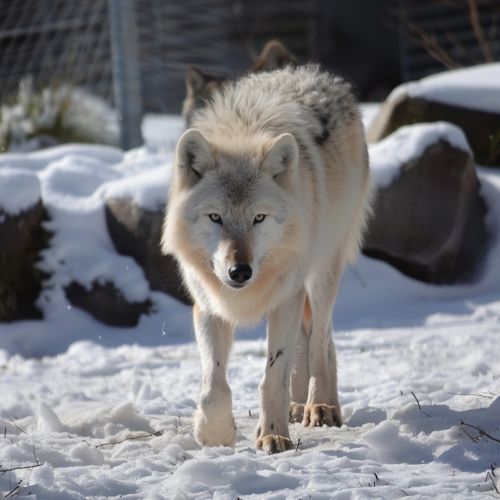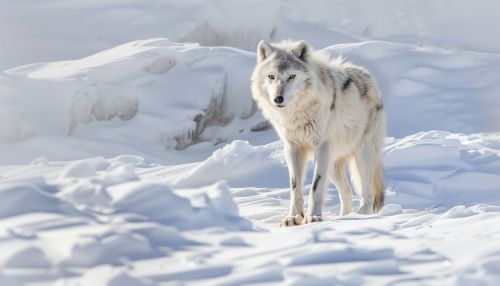Arctic Wolf
Introduction
The Arctic wolf (Canis lupus arctos), also known as the white wolf or polar wolf, is a subspecies of the gray wolf, a mammal of the family Canidae. Native to the Canadian Arctic Archipelago, it is a resilient and hardy animal that has adapted to survive the harsh, frigid conditions of the Arctic region.


Description
Arctic wolves are smaller than their gray wolf counterparts, with males averaging between 75 to 110 pounds and females slightly smaller. They have a dense, white coat that provides insulation against the cold, and their muzzles and legs are shorter, which helps to conserve heat. Their ears are rounded and their bodies are stocky, further adaptations to their cold environment. Unlike other wolf species, Arctic wolves often have a more rounded skull and a narrower braincase.
Habitat and Distribution
The Arctic wolf inhabits the northern part of North America, specifically the Canadian Arctic Archipelago, from Melville Island to Ellesmere Island. They are also found in the northernmost parts of Greenland. The Arctic wolf is the only subspecies of wolf that is not threatened by human habitat destruction, as its remote home is largely uninhabited by humans.
Behavior
Arctic wolves live in packs of 7 to 10 animals on average, but packs of up to 20 wolves have been observed. The pack is led by an alpha male and female, who are the only members of the pack that breed. Pack members communicate through a combination of howls, body language, and scent marking. Unlike other wolf species, Arctic wolves are not known to be territorial, likely due to the scarcity of prey in their environment.
Diet
The diet of the Arctic wolf primarily consists of muskoxen and Arctic hares, but they have been known to prey on lemmings, caribou, and Arctic foxes. They have also been observed scavenging on carcasses, showing their adaptability in a harsh environment where food is often scarce.
Reproduction
Arctic wolves mate from January to April, with the alpha male and female being the primary breeding pair. After a gestation period of about 63 days, the female gives birth to a litter of 2 to 3 pups, although litters of up to 12 have been recorded. The pups are cared for by the entire pack, with non-breeding females often producing milk to feed them.
Adaptations
The Arctic wolf has several adaptations that allow it to survive in the harsh Arctic environment. Its white coat not only provides camouflage in the snow, but also insulation. Its smaller ears, shorter muzzle, and shorter legs minimize the amount of skin exposed to the cold air, reducing heat loss. The Arctic wolf also has a layer of fat under its skin that provides additional insulation.
Conservation Status
The Arctic wolf is not considered endangered, as it lives in areas far from human habitation where it faces few threats. However, climate change and the resulting loss of sea ice are altering the Arctic ecosystem and could potentially impact Arctic wolf populations in the future.
